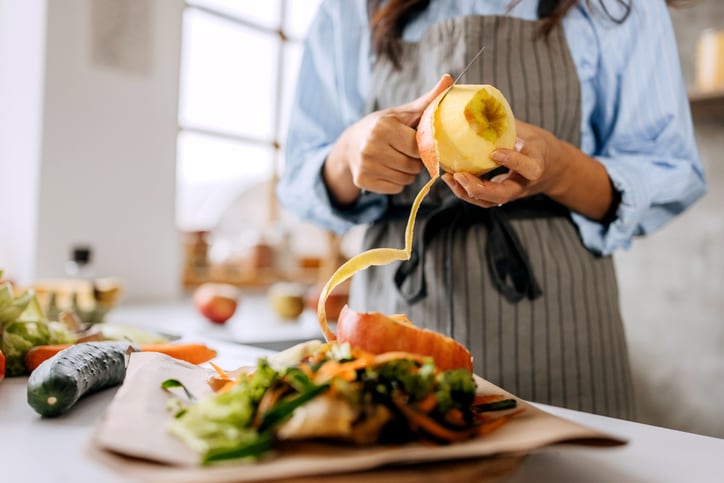Created in collaboration with the Pacific Coast Food Waste Commitment, the toolkit includes reading material, training videos and instructions for company-wide competitions, along with case studies. It is free and available in English and Spanish with plans for adding other languages.
The potential for change is enticing: A Quick Win – an idea with little-to-no cost requirements that is easy to implement – can improve 70% of food waste reduction on a single manufacturing line. One process change can involve 53% recovery of fresh fruit, with the potential to sell an additional 4,620 finished product packages.
The rationale behind gearing the toolkit toward employees is that they are often closest to food waste issues and can make improvements during their daily operations. It is meant to empower employees to come up with solutions. This resists a top-down hierarchy and makes food-waste part of a shared mission across the business. There is also the element of fun in healthy competition, allowing employees recognition for their ideas. Plus, it develops team spirit, which can benefit the whole organization.
The US Food Waste Pact is a volunteer agreement led by ReFED and World Wildlife Fund (WWF). Signatories across the food supply chain participate to reduce food waste across the food industry. The Pacific Coast Waste Commitment is a public-private partnership with businesses and governments reducing food waste along the West Coast in the US and Canada.
The Toolkit
The toolkit outlines ways that food businesses can educate frontline staff and excite them about pitching food waste reduction ideas and following through with action. Basically, everything leads up to a challenge.
“The employee engagement challenge was an incredible way to educate and learn of the good ideas employees shared,” a Bob’s Red Mill Manager told the U.S. Food Waste Pact. “There was good participation and involvement especially from mechanics and line operators to fix small but significant ways to reduce waste.”
Employees can learn how to identify revenue generating opportunities through food reuse and repurpose. They learn to spot cost reduction opportunities through diversion and upcycling, thereby reducing waste management costs. They gain a continuous improvement mentality, which focuses on process improvement.
A timeline in the toolkit suggests running the engagement implementation for 15-16 weeks. This begins with the readiness phase and ends with celebrating the pilot. In between those points, there are a preparation phase, the competition, and pilot.
In the pilot, management chooses an idea to be tested, conducts a before/after audit and analyzes the results. However, the food waste reduction should never truly end, as continuous improvement is encouraged, according to the toolkit authors.
The Case Studies
In the toolkit, employees (and managers) can see food waste reduction challenges and outcomes at Aramark, Bob’s Red Mill, Fresh Del Monte and Land O’Lakes/Kozy Shack.

